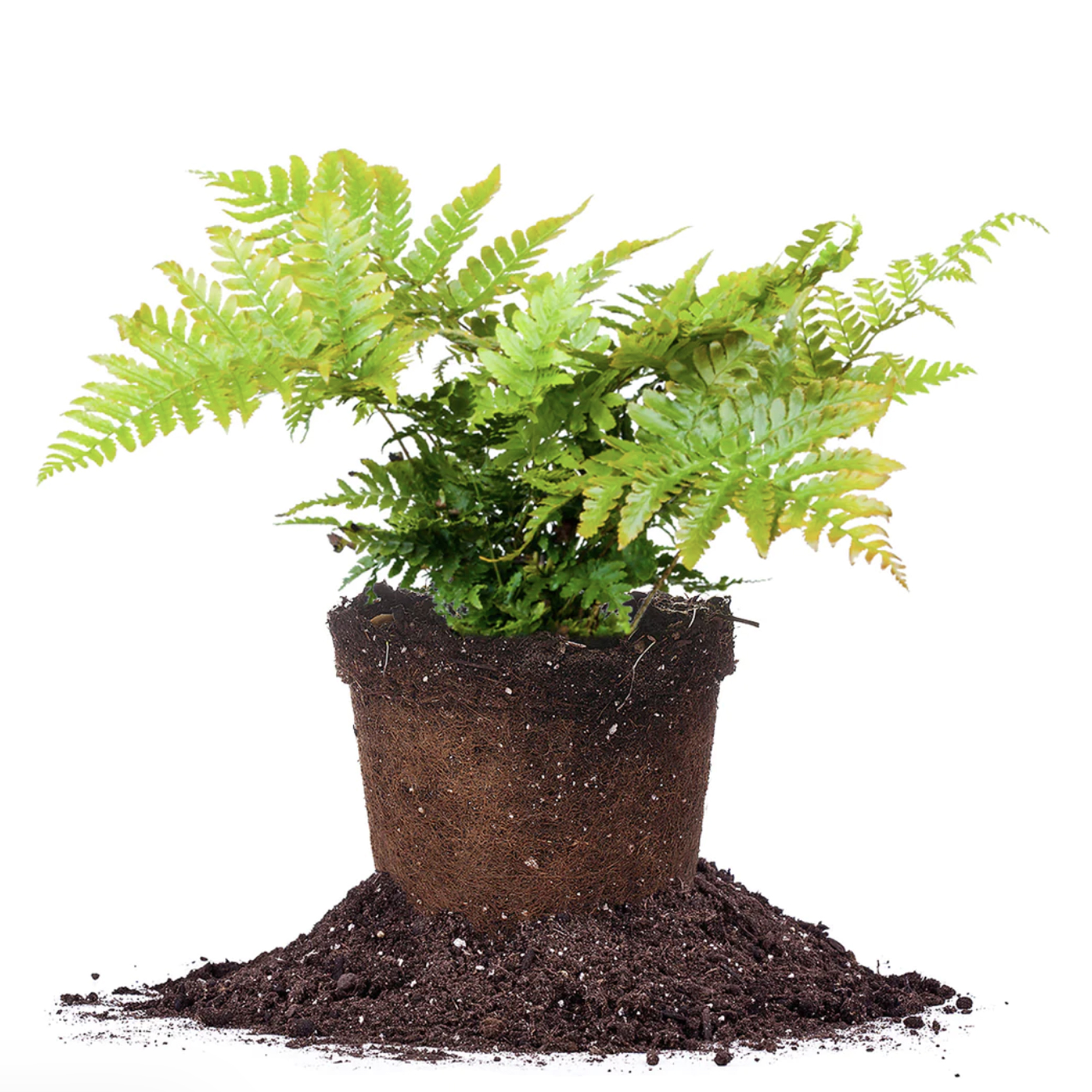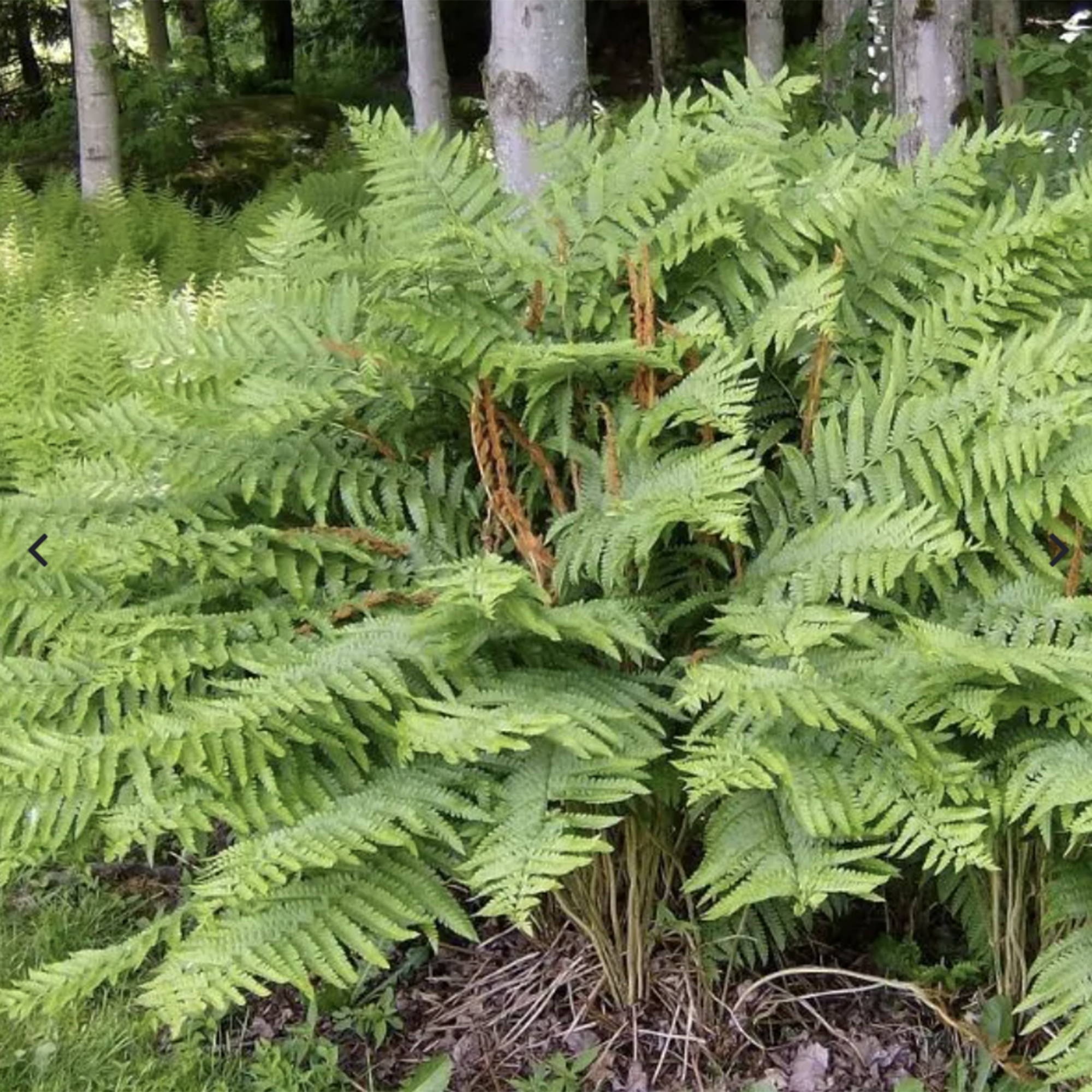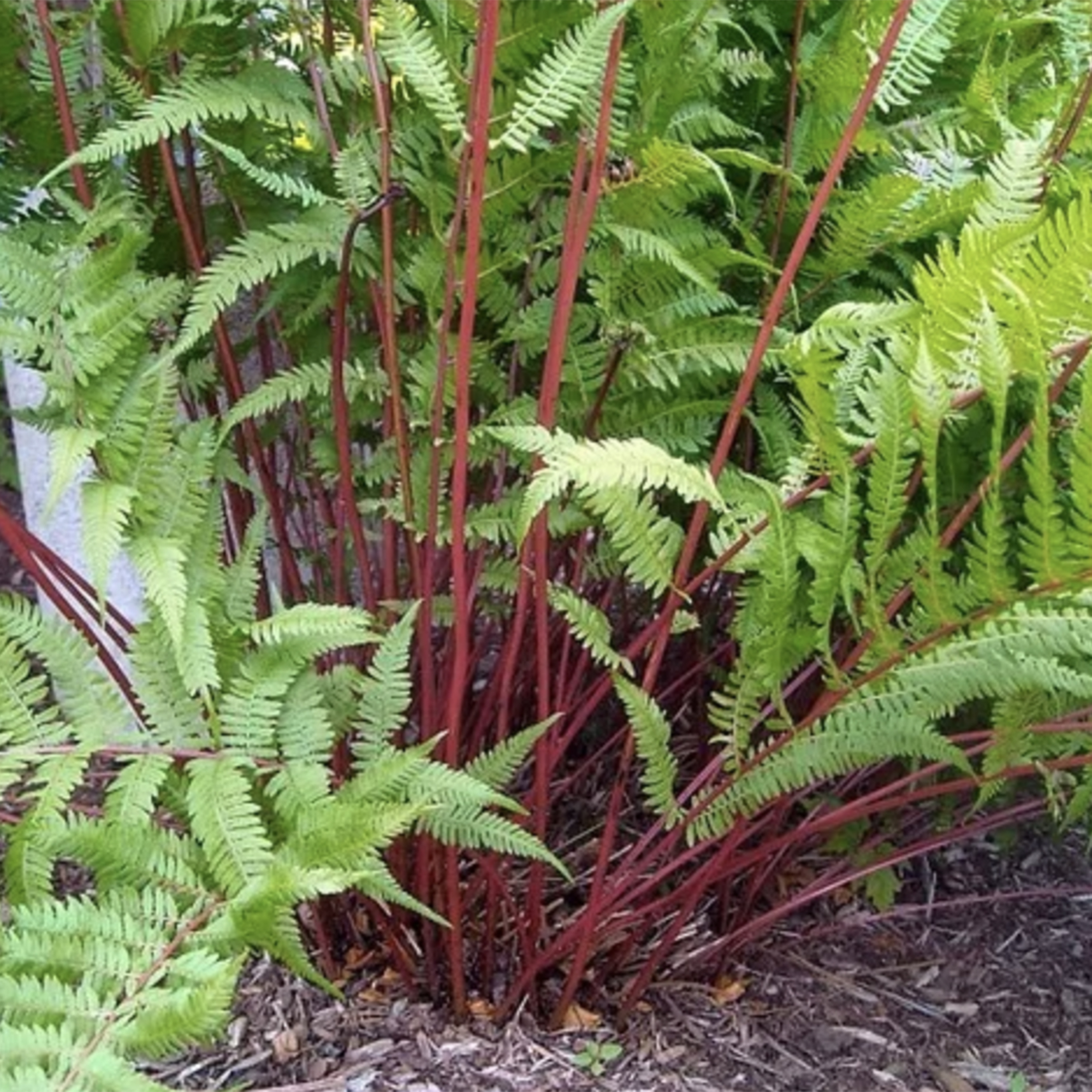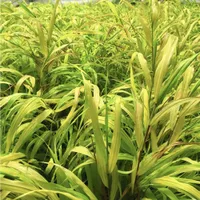Best plants for under trees – 10 varieties that will thrive in the shade
Add a plethora of rich texture, color, and scent to this tricky area
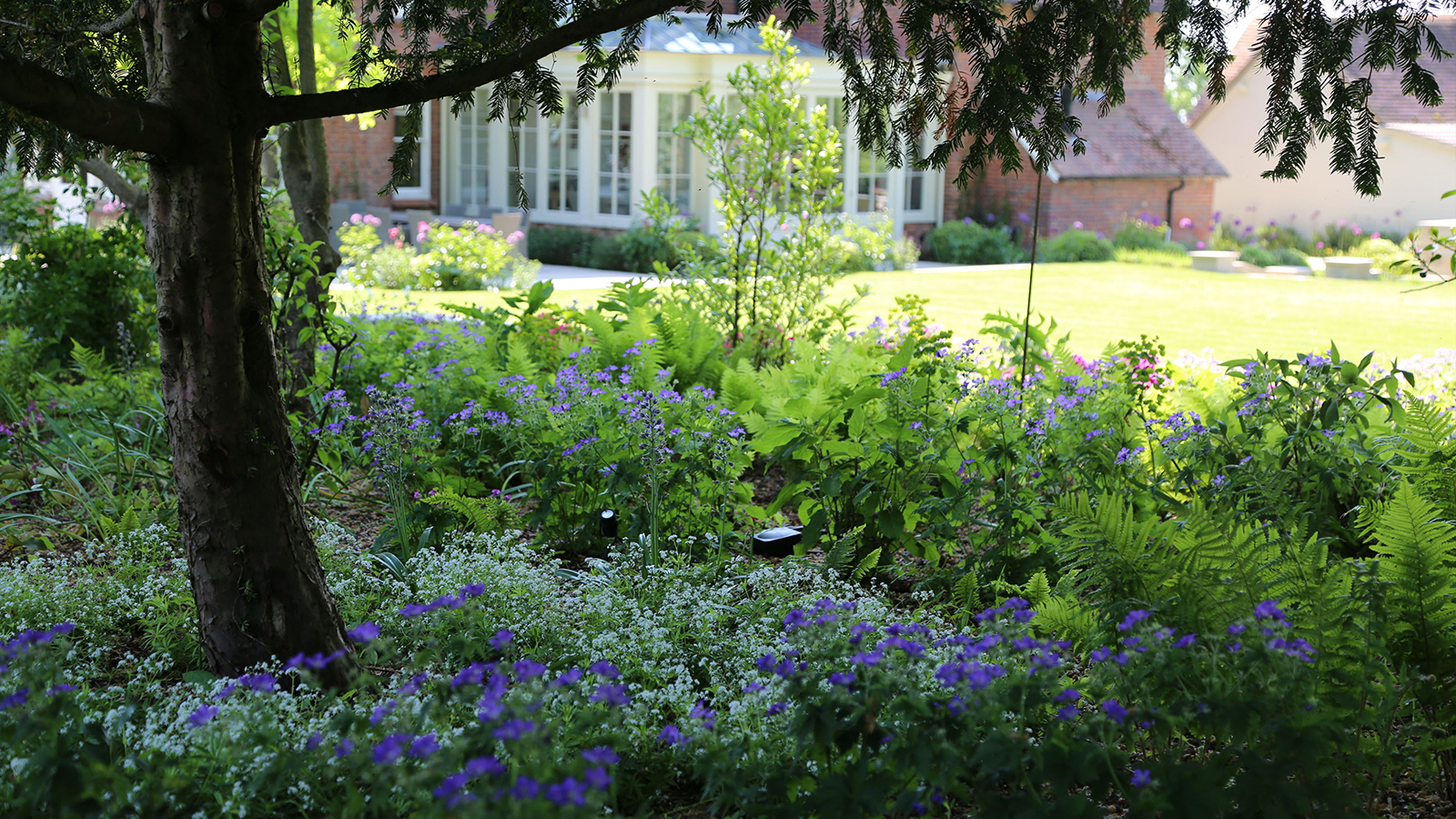

Space underneath trees can be notoriously tricky to cultivate. With the ground beneath often looking dull, shaded, and bare, the conditions make it tricky for some plants to thrive.
However, there are plenty of shade plants that will grow quite happily beneath a canopy of branches. From sweet-scented shrubs for under trees to and woodland-style bulbs to carpets of lush foliage.
So, if you're looking to make the most of your space with the best plants for under trees, read on to discover our suggestions.
The best plants under trees: 10 of our favorite picks
Perhaps you've recently added one or two trees to your plot. Or, maybe you've got a few well-established species along the back of your borders or dotted across your lawn. This selection of flowers and shrubs for shade will help turn the drab area beneath into a focal point.
1. Japanese spurge
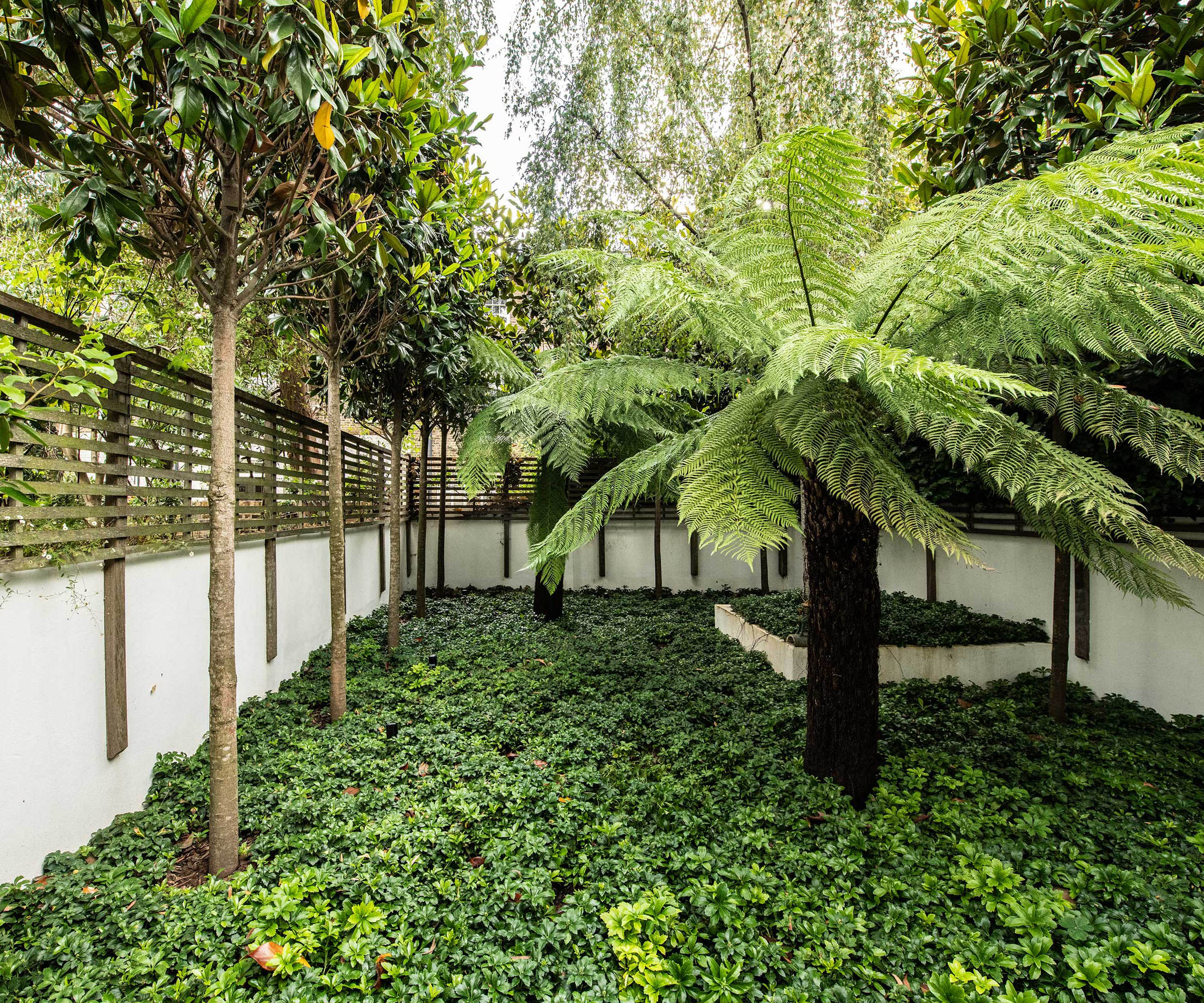
Japanese spurge makes a wonderful ground cover in this urban garden designed and built by Bowles & Wyer
Pachysandra terminalis, otherwise known as Japanese spurge, is a tough little plant that will positively thrive beneath backyard trees for shade zones. As Rhoda Maw, Garden Designer of Rhoda Maw Garden Design says, it hugs the ground, is evergreen, and the variegated variety – Pachysandra terminalis 'Variegata' – will brighten up dark, shady areas with its lighter edged-leaves.
It will gently grow to form a lush green carpet which will help to suppress weeds as well as provide a soothing vista of foliage. What's more, in late spring, it's adorned with tiny white flowers. Growing to a mere height of 10in, it's a good ground cover plant.
If you're looking for the best plants under trees that also work for low maintenance garden borders, then this is a great choice.
Design expertise in your inbox – from inspiring decorating ideas and beautiful celebrity homes to practical gardening advice and shopping round-ups.

Rhoda Maw Garden Design is a busy, professional design practice creating bespoke stylish gardens and landscapes, which improve people's quality of life.
2. Lesser periwinkle
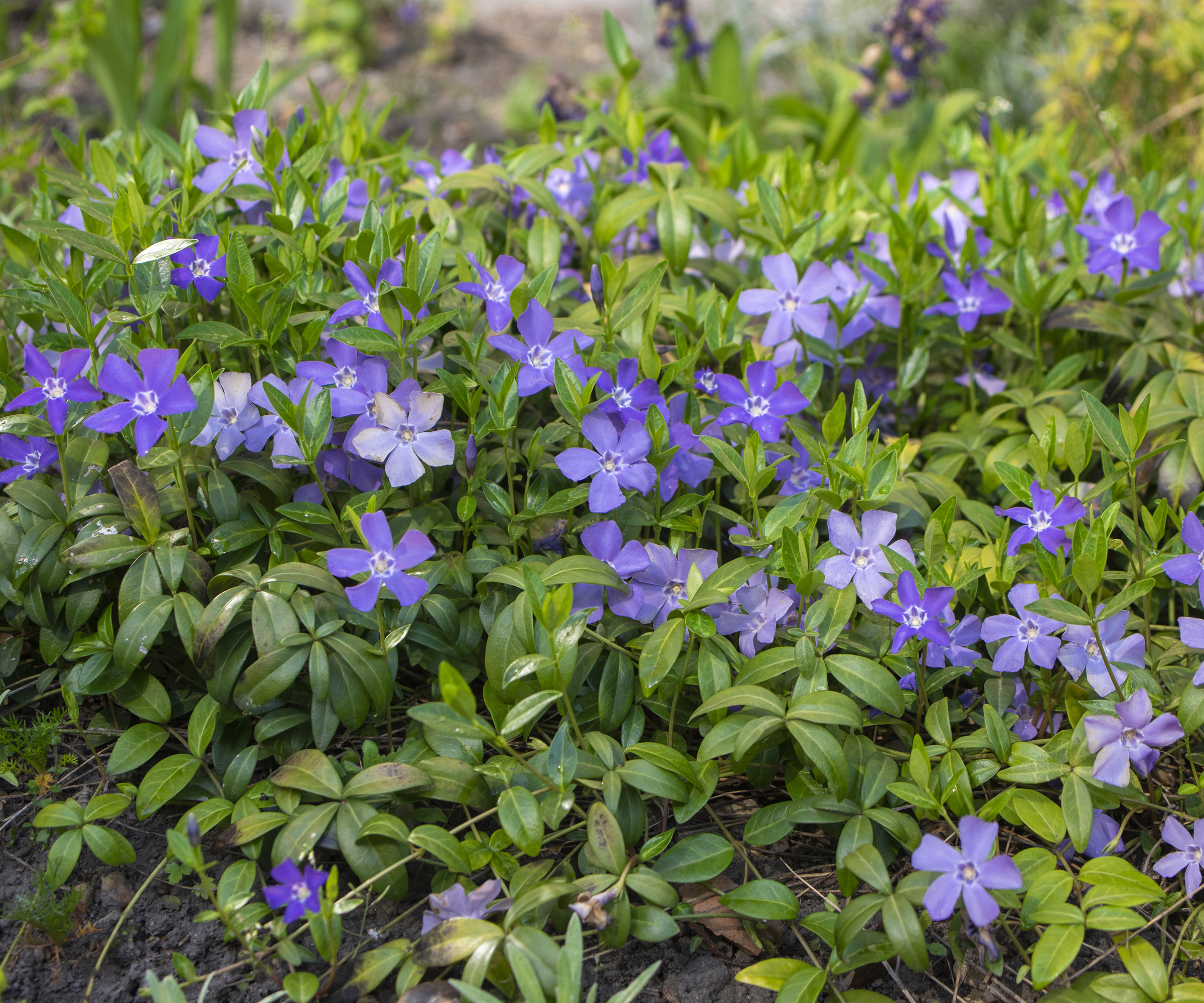
Lesser periwinkle provides pretty purple blooms
Although small (reaching a height of around 10in), this purple shade to part-shade perennial still makes an impact without being as invasive as the 'greater' version.
Otherwise known as Vinca minor, it's 'a pretty woodland plant and brilliant for ground cover beneath trees' says garden designer Raine Clarke-Wills of Raine Garden Design. It will do just fine in partial shade beneath leafy canopies, and all garden shade areas, and will grow to form a dense mat relatively quickly.
It flowers from mid spring to early fall, but its leaves are evergreen, offering visual interest and color all year round. You can also find varieties with white flowers.
Love a purple hue as part of your garden color scheme? Raine also suggests Liriope muscari to try, which has spikes of eye-catching flowers and strappy, evergreen leaves.

Award winning designer, Raine Clarke-Wills, has been creating stunning gardens for clients for over 22 years. Raine is professionally qualified in garden design and horticulture.
3. Ferns
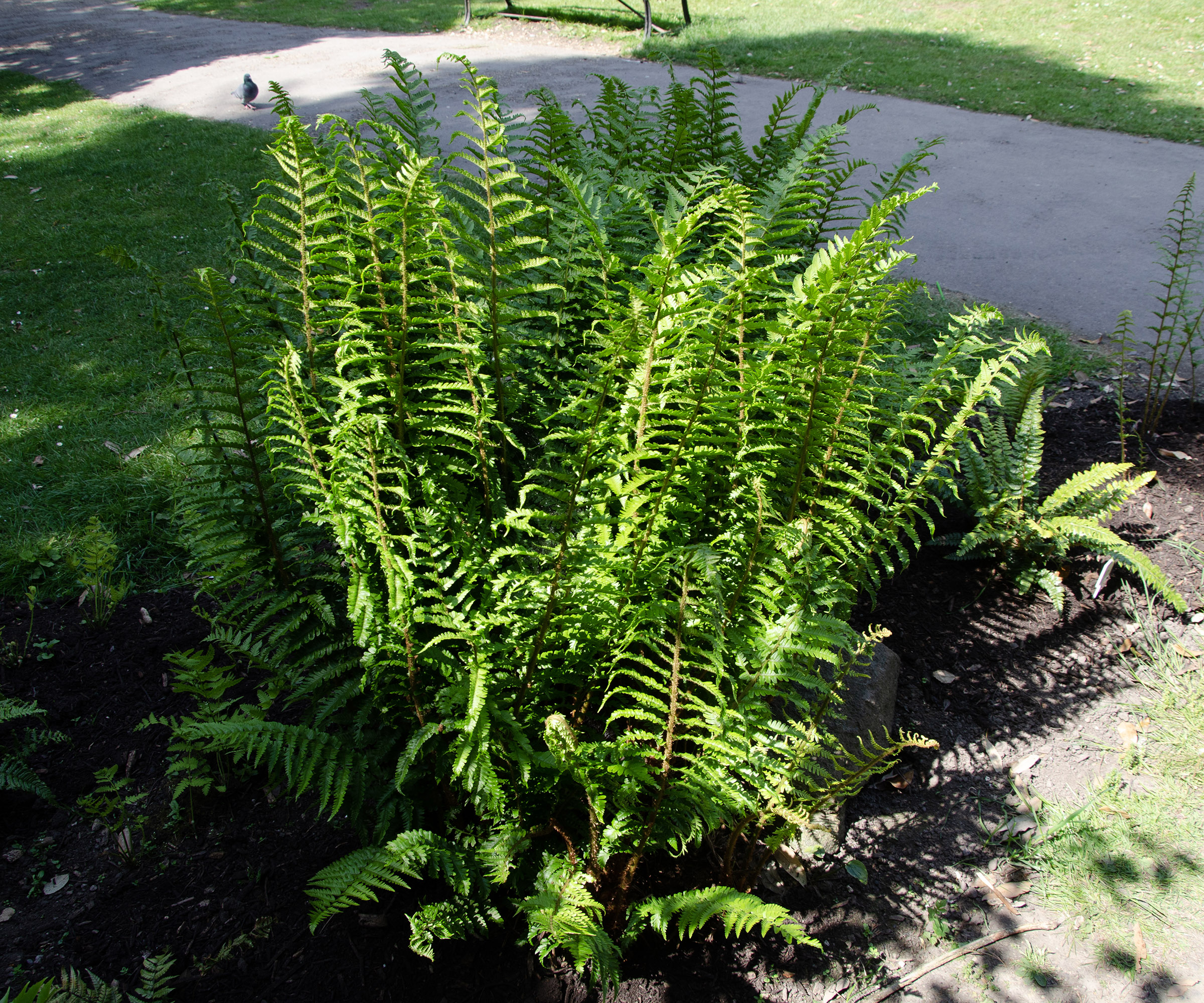
These leafy features create a jungle-like vibe beneath trees
Ferns are a popular choice for the best plants under trees. Once their fronds unfurl, they create a verdant, jungle-like vibe with their vibrant green tones and textural forms.
For the best ferns for the spot beneath your trees, opt for ones which will cope in dry shade. Rhoda Maw suggests Asplenium scolopendrium, otherwise known as the Hart's tongue fern. It has leathery, evergreen leaves and doesn't grow too tall – up to around 3ft – so is good for small garden ideas. Although it will grow in the dry, shady conditions beneath a tree, do remember to give it a good mulch annually.
Rhoda also says that you can opt for ferns that have 'dry' in their name, such as Dryopteris erythrosora, also known as the Japanese shield fern. Showcasing coppery, deciduous leaves which darken to a lush green as it grows, this is a lovely choice for bringing warm tones to your plot. Keep it watered and mulch well. It'll grow up to 1m in height.
Raine Clarke-Wills also suggests Dryopteris filix-mas – the 'male fern' – as a good choice for planting beneath trees. Again, it grows to around 3ft in height, is deciduous, and will be grateful for frequent watering and a good mulch. Its robust, green leaves turn copper-colored in fall.
If you're looking for something else to partner up with your fern, Raine suggests Tellima grandiflora (or fringe cups). The combination of structures and green tones makes a gorgeous vista beneath the canopy of a tree.
Shop fern plants for under trees
4. Wood anemones
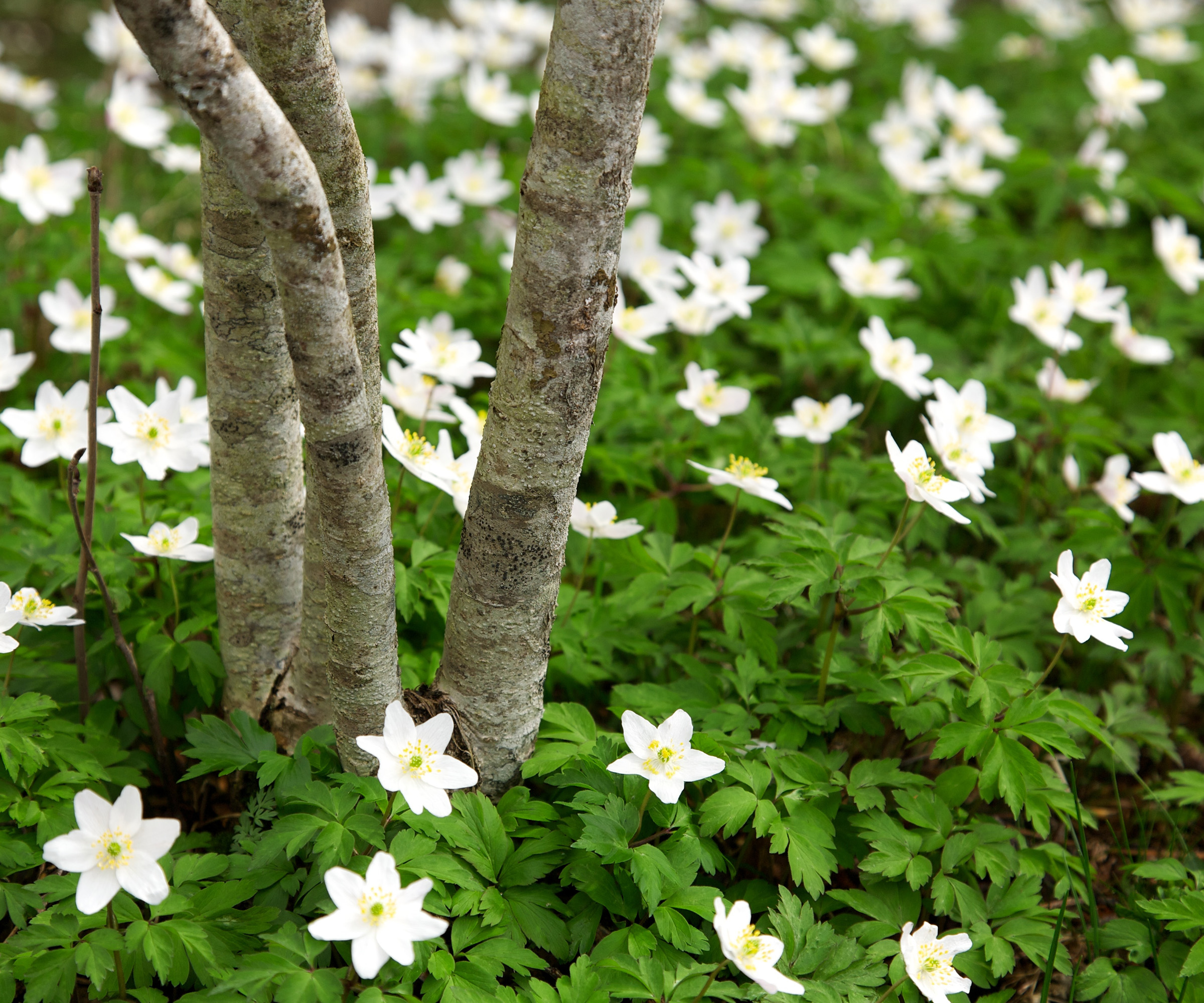
If you're looking to create a woodland feel with your best plants under trees, try wood anemones
There are a few spring bulbs that make wonderful choices when it comes to picking the best plants under trees. One of these is Anemone blanda 'White Splendor' (a white wood anemone), as suggested by garden designer Rhoda Maw. Try Votaniki Anemone White Splendor Bulbs at Amazon.
Anemone bulbs add a lovely woodland garden feel to a backyard with their delicate flowers in spring, and will cope in dappled shade and well-drained soil just fine. Another low-growing, mat-forming perennial, wood anemones will naturalize over time to produce even more plants.
'These look really great when planted under fast growing flowering trees – as their white, daisy flowers echo the blossom of the trees,' Rhoda says.
5. Alchemilla mollis
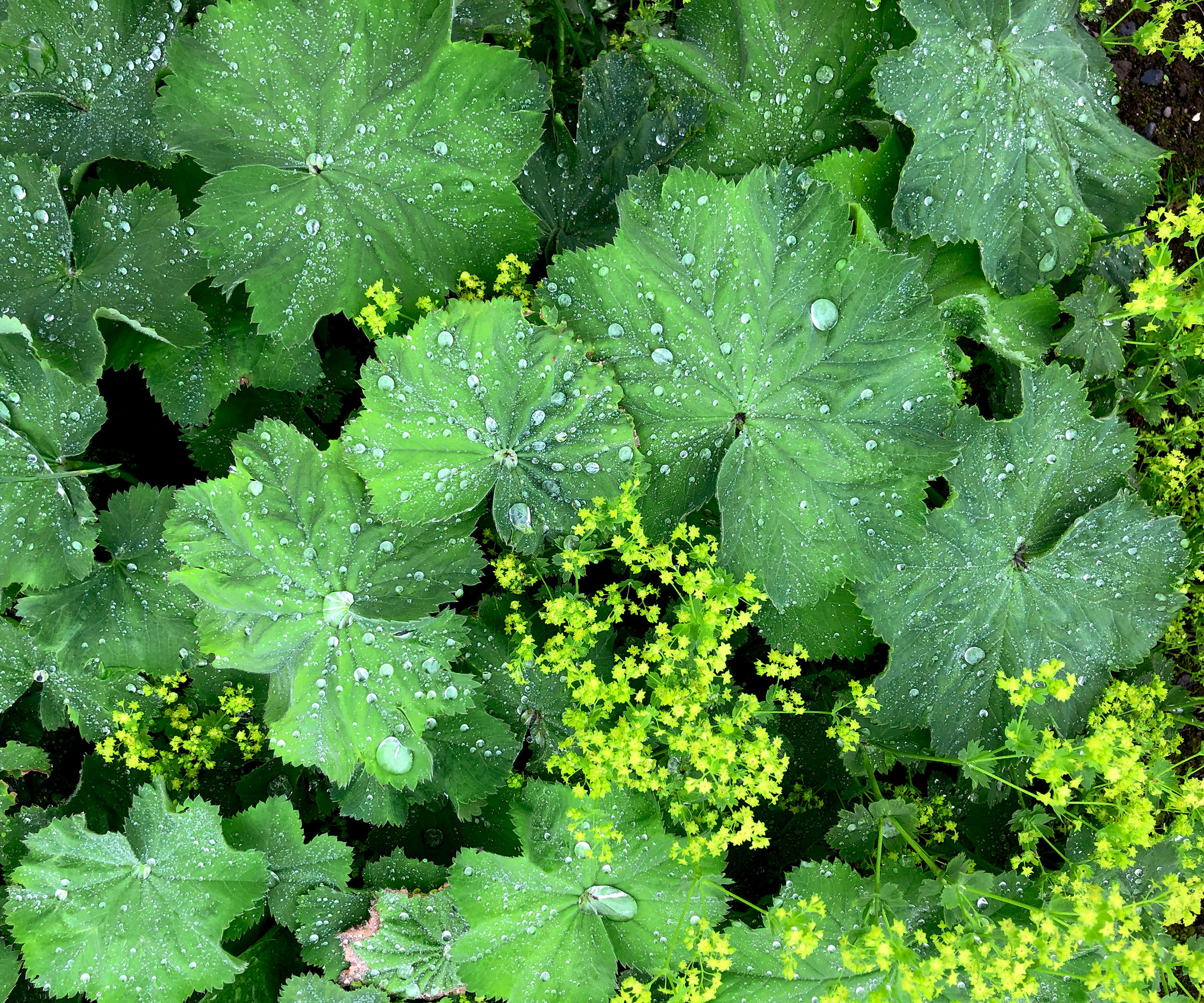
Otherwise known as lady's mantle, this pretty plant looks stunning adorned in droplets of rain
'Alchemilla mollis is an absolutely invaluable, long-flowering herbaceous perennial,' says Garden Designer Raine Clarke-Wills. They thrive as plants under trees due to their ability to survive in dry, shaded conditions.
It's a fabulous choice if you're a fan of cottage gardens (it can be grown in sunny borders as well as beneath trees), and grows quickly, up to 3ft wide and tall.
The sight of water droplets caught on the scalloped leaves after rainfall is a delight. And, in summer through to early fall, a frothy display of tiny flowers in a vivid lime-yellow tone can be enjoyed. Keep on top of deadheading to encourage a second flush of blooms.
For a variety of textures, plant alongside Hakonechloa macra (Japanese forest grass). The two make perfect partners, says Raine.
Sunflare™ Japanese Forest Grass | Was $59.99, now $39.59 at Nature Hills
This variety is selling out fast. The variety All Gold Japanese Forest Grass is also on sale at the moment.
6. Mahonia
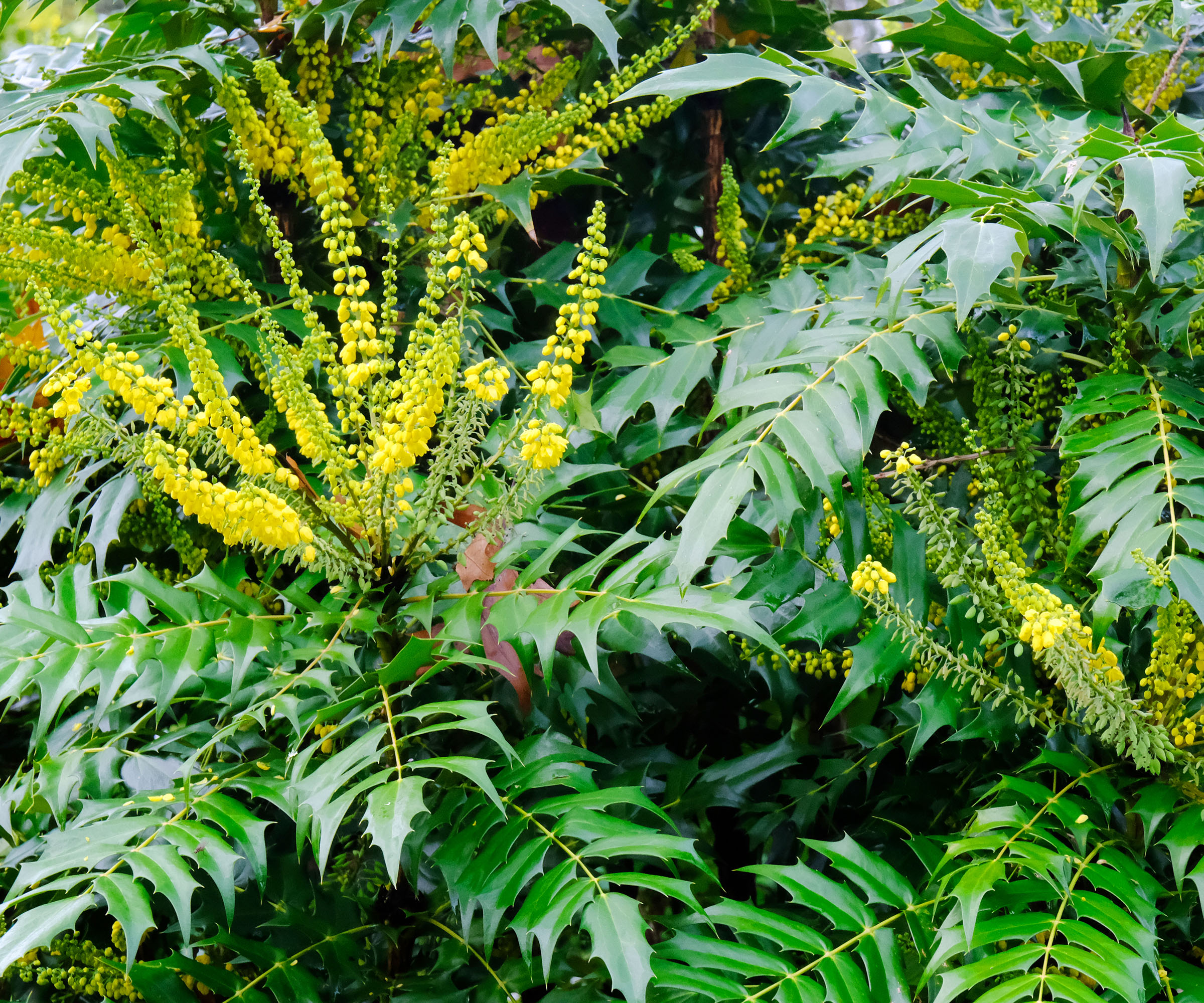
Bright yellow flowers will pep up a shady spot beneath a tree
For a flower that will shine out at you from the dark shade, opt for Mahonia aquifolium, suggests Rhoda Maw. She recommends the 'Apollo' variety, with its bright yellow flowers and dark, glossy, evergreen leaves. This is a smaller variety in comparison to some of the larger mahonias, as it grows up to a height of 3ft and a width of 5ft.
It blooms in the spring, before bearing blue-black berries loved by birds. We agree that it makes a good, hardy shrub when it comes to the best plants under trees, just be sure to perform an annual mulching around the base (well-rotted manure is good here), and water regularly in dry conditions.
7. Snowdrops

Galanthus, otherwise known as the snowdrop, is an elegant choice
Snowdrops are one of our favorite early-flowering bulbs, offering the first hopeful promise of spring when there's not much else in bloom. They will grow happily in partial shade, and look lovely around the base of a tree in gentle drifts.
Plant bulbs in fall, or 'in the green' plants in spring (when they have leaves, roots, and sometimes flowers).
Keep the soil moist to encourage naturalizing over time. It's important not to let the bulbs dry out over summer. Divide the resulting clumps of plants up every three years or so. Many varieties reach a height of around 8in, although the 'Giant' variety grows up to 1ft, and is honey-scented, too.
They're not only good for the best plants under trees – snowdrops also look spectacular in containers. Take a look at our best plants for winter pots for other brilliant options to brighten up the coldest season.
8. Sarcococca

Sweet box with its intoxicating scent is a good contender for the best plants under trees
If you want to include an amazingly fragranced, winter-flowering shrub in your pick of the best plants under trees, then we recommend Sarcococca confusa. An ideal candidate for landscaping with evergreens.
Also known as sweet box or Christmas box, its elegant spikes of creamy-colored flowers make a striking contrast against its deep green and glossy leaves. Long-lasting berries follow the flowers, generally in purple or black hues.
The evergreen grows up to a height of 8ft and width of 5ft. It does well in the shade of a larger tree, and providing the soil is moist yet well-drained and ideally humus-rich, requires very little maintenance.
9. Siberian bugloss

Brunneras are similar in appearance to forget-me-nots
Another recommendation is Siberian bugloss (Brunnera macrophylla). It looks like a larger, more robust forget-me-not, with pretty blue flowers in spring and a hardy nature. Some types, such as 'Jack Frost' and 'Sea Heart' have silvery foliage which only adds to the visual appeal.
They can grow well in dry, shady spots beneath trees (although will do even better if the soil is kept moist but is well-drained), and are very low maintenance shrubs as well as pest-resistant.
Growing to a height of around 1.4ft (and eventually spreading to around 2ft), this plant makes a good addition to a woodland-themed plot.
10. Hostas
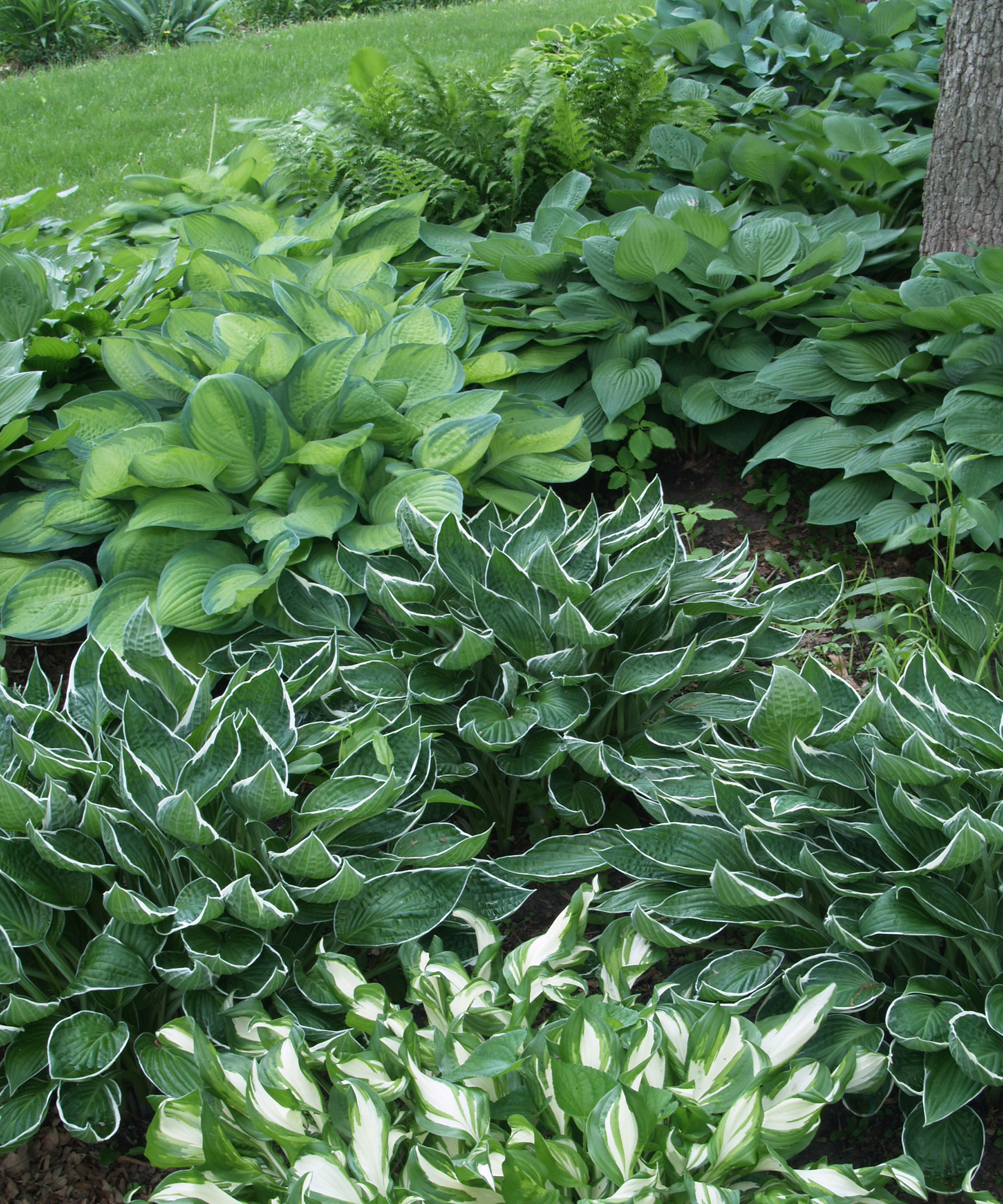
Variegated hostas work well in this small raised bed beneath an olive tree
These striking perennial plants are well-loved for their foliage which can come in many shades, including blue-green ('Fragrant Blue'), lime-green ('Guacamole'), and variegated tones (try 'Patriot').
Many types will shoot up structural, silvery-mauve flowers in summer. Sizes vary widely – you can even grow miniature hostas in pots. We like this 10 Hosta Mixed -Perennial Bare Roots at Walmart.
They generally prefer fertile soils. But, if the spot beneath your tree is dry, opt for varieties with thicker, waxier leaves – they are more-tolerant for these conditions. Wherever you plant them, mulch annually, and keep them watered during spells of dry weather.
Watch out for slugs who love to devour hosta leaves and have a look at slug control methods.
FAQs
How do you plant under a tree?
There are a few things to bear in mind when planting beneath a tree:
- When digging the holes for your plants, try to avoid damaging the tree's roots, especially the thicker ones. Instead, try to find gaps between them to nestle your plants and use a small trowel.
- Some trees tolerate more disturbance than others – do your research beforehand to check what your tree is likely to cope with. Maples, for instance, can be tricky to plant beneath due to their dense, shallow root structure.
- Start small. Avoid trying to install large, fully-grown shrubs and other plants beneath established trees. Instead go for smaller plug plants and bulbs. For trees which are less tolerant to disturbance, you may want to spread your planting out over a longer period to give it time to recover.
- Keep your new plants well-watered, especially as they establish. As they are competing with the tree's roots, and may not get as much rain due to the canopy of leaves above, they will be grateful for the extra help.
- Remember to mulch your plants annually, but avoid piling it up high up around the tree's trunk as this can cause it to rot. Instead, pull it slightly away from the base of the tree. Avoid piling mulch up over roots too, which can smother them.
Need more advice for boosting your tree appeal? Take a look at our guide to landscaping around trees to transform this often forgotten space further.

Holly started writing about gardening five years ago, and she is a regular contributor to Homes & Gardens. She has also written many gardening features for Woman & Home and Real Homes, too. She has previous experience as a professional gardener, where she helped to plant and maintain private gardens. Holly has also looked after allotment plots over the years and loves to grow her own flowers and veggies from seed. In her spare time, she enjoys visiting local gardens, botanical drawing, and tending to her ever-growing collection of houseplants.
